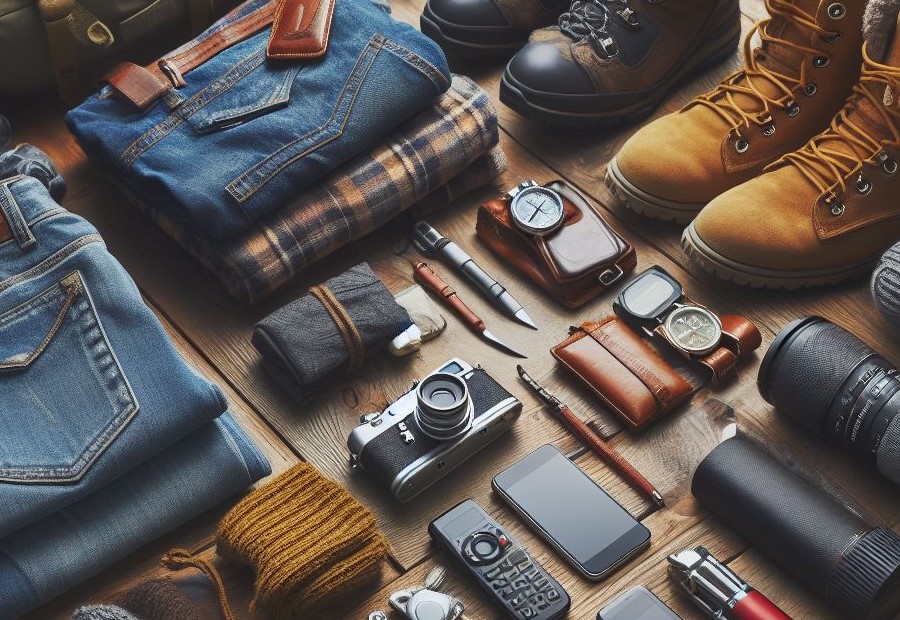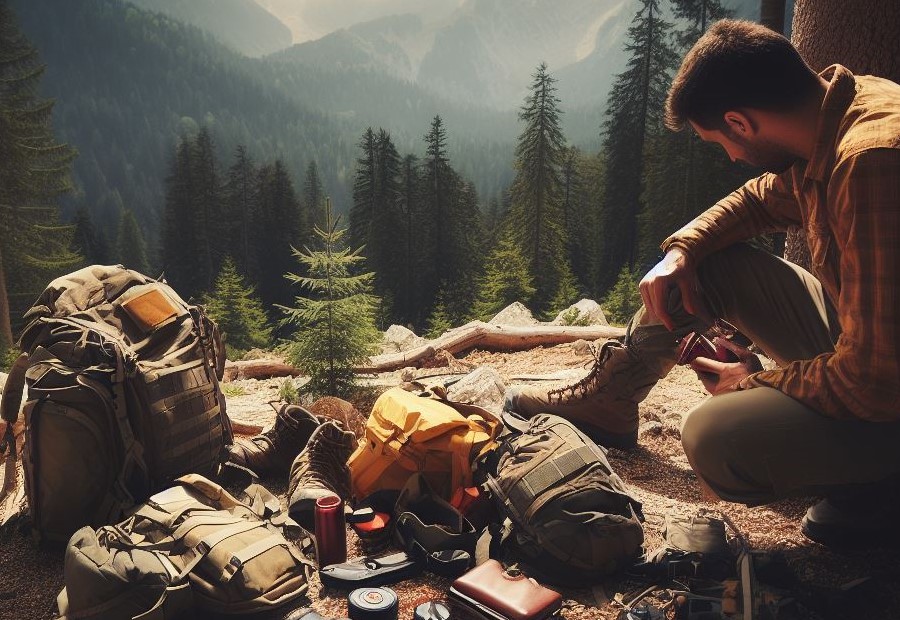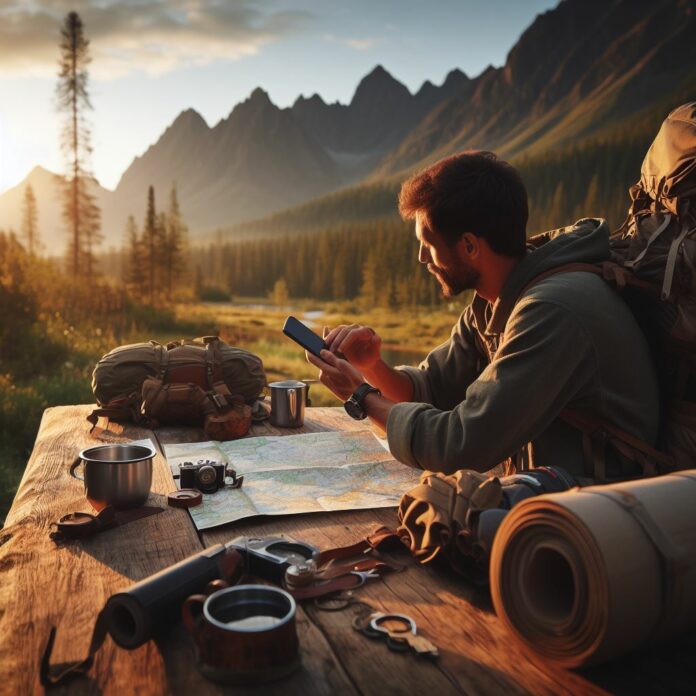To pack for an outdoor adventure is a crucial aspect of ensuring a safe and enjoyable experience. Properly planning and organizing your gear and essentials can make a significant difference in your comfort and preparedness in the great outdoors.
Whether you’re hiking, camping, or embarking on any outdoor activity, following a systematic approach to packing is essential.
By following guidelines and tailoring your packing list to suit your specific outdoor adventure, you can ensure that you have all the necessary items to make the most of your time in nature. Proper packing sets the stage for an unforgettable and well-prepared outdoor experience.
Research and Planning

Determine the Nature and Duration of the Outdoor Adventure
When preparing for an outdoor adventure, it is crucial to determine the nature and duration of the trip. This will enable you to better understand the requirements and plan accordingly.
- Assess the type of adventure you will be embarking on, whether it’s a hiking trip, camping expedition, or a multi-day trek.
- Consider the duration of your adventure, whether it’s a weekend getaway or a month-long expedition. This will greatly influence the amount of supplies and provisions you need to pack.
- Research the terrain and environment you will encounter. Will you be in the mountains, forests, or by the seaside? This information will guide your choice of equipment and clothing.
- Take into account the seasonal conditions. Will you be adventuring in the scorching heat of summer or the freezing temperatures of winter? This will have an impact on your clothing and gear choices.
- Consult weather forecasts for the duration of your trip. Understand the potential weather patterns and prepare accordingly with appropriate clothing and shelter options.
By considering the nature and duration of your outdoor adventure, you can ensure that you pack the right equipment and supplies to have a safe and enjoyable experience.
Research the Weather and Climate
To ensure a well-prepared outdoor adventure, it is crucial to research the weather and climate conditions of your destination. This will help you research the weather and climate accurately and pack the appropriate clothing and gear according to the forecast.
Checking the forecast for the duration of your adventure will help you anticipate any changes in weather patterns. It is important to take note of the average temperature range during your trip to pack suitable clothing and insulation.
Additionally, researching if the area is prone to rain, snow, or extreme weather conditions is crucial. This will help you pack waterproof gear accordingly. Consider the elevation and its influence on weather conditions as well, as higher altitudes can bring colder temperatures and stronger winds.
It is also important to keep in mind the season you will be visiting, as different seasons can have varying weather patterns and temperature fluctuations. Remember, accurate research on the weather and climate will ensure you are well-prepared for any conditions you may encounter during your outdoor adventure.
So, gather all the necessary information, pack accordingly, and embark on your adventure with confidence and peace of mind.
Make a Checklist of Essential Items
When getting ready for an outdoor adventure, it is crucial to make a checklist of essential items to guarantee that you are well-prepared and have everything you need.
Here is a list of important items to include:
- Appropriate clothing for the weather conditions, including layers for warmth and waterproof gear.
- Sturdy and comfortable footwear suitable for the terrain.
- Shelter and sleeping gear, such as a tent, sleeping bag, and sleeping pad.
- Food and cooking equipment, including lightweight and portable options, as well as necessary utensils.
- Navigation tools, such as a map, compass, and GPS, to assist you in navigating your way during the adventure.
- A well-stocked first aid kit with essential supplies for any injuries or emergencies.
It is essential to double-check your checklist and ensure that you have all the necessary items before embarking on your outdoor adventure.
Furthermore, consider the specific nature and duration of your adventure to determine any additional items that may be required.
Packing Essentials

Clothing
When packing for an outdoor adventure, choosing the right clothing is crucial.
- Consider the weather conditions you will encounter. If it’s going to be hot, prioritize lightweight and breathable fabrics like cotton or moisture-wicking materials like polyester.
- For colder climates, dress in layers to trap heat and insulate your body. Opt for thermal or wool base layers, followed by insulating mid-layers, and finish with a waterproof and windproof outer shell.
- Bring adequate protection from the sun with a wide-brimmed hat, sunglasses, and sunscreen. UV rays can still be harmful even on cloudy days.
- Make sure your clothing provides functionality and mobility. Look for items with pockets for storage and consider quick-drying fabrics for when you encounter water.
- Choose appropriate footwear depending on the terrain. Hiking boots or sturdy trail shoes are ideal for rough or uneven surfaces, while lightweight sneakers can be suitable for smoother trails.
- Remember to pack extra socks to keep your feet dry and prevent blisters.
Don’t forget to check the weight and space of your clothing items to ensure you can comfortably carry everything you need. Prioritizing comfort, protection, and versatility will enhance your experience during the outdoor adventure.
Footwear
When it comes to choosing footwear for an outdoor adventure, it is important to consider the terrain, weather conditions, and the activities you will be engaging in. Here are some factors to consider:
- Suitability: Ensure that your footwear is suitable for the specific outdoor activity you will be undertaking. Hiking boots with sturdy soles and ankle support are ideal for hiking and trekking, while trail running shoes might be more suitable for running on rugged trails.
- Comfort: Comfort is crucial when it comes to footwear. Look for shoes that provide a snug fit without being too tight or too loose. Consider shoes with cushioning and good arch support to prevent discomfort and injuries during long hikes or walks.
- Weather Protection: Depending on the weather conditions, you may need different types of footwear. Waterproof or water-resistant shoes are essential for wet and rainy environments, while breathable shoes are important for hot and humid conditions.
- Grip and Traction: The terrain you will be traversing determines the type of grip and traction you need. Look for shoes with durable outsoles and deep lugs for better traction on slippery or uneven surfaces.
- Durability: Outdoor activities can be demanding on footwear, so it is important to choose shoes that are made with durable materials and construction. This will ensure that your footwear will last through your adventures.
Remember, finding the right footwear is essential for a comfortable and enjoyable outdoor adventure. Take your time to research and try on different options to find the perfect fit for your needs.
Shelter and Sleeping Gear
When preparing for an outdoor adventure, it is crucial to take into account the shelter and sleeping gear you will need. Here are some vital items to include:
- Shelter: A dependable tent is essential for providing protection from the elements. Seek a lightweight and waterproof tent that is suitable for the specific conditions you will encounter.
- Sleeping bag: Select a sleeping bag that matches the anticipated temperature range of your adventure. Consider factors such as insulation type, weight, and compactness.
- Sleeping pad: A sleeping pad offers insulation and comfort by creating a barrier between your body and the ground. Look for one that is lightweight, durable, and provides sufficient cushioning.
- Pillow: While not mandatory, a pillow can significantly improve your sleeping experience in the outdoors. Choose an inflatable or compressible pillow that is easy to pack.
- Tarp or groundsheet: Safeguard the floor of your tent from moisture and abrasion with a tarp or groundsheet. Ensure it is appropriately sized for your tent.
- Repair kit: Include a small repair kit with items like duct tape and fabric patches to address any tears or damages to your shelter or sleeping gear during your adventure.
By taking this shelter and sleeping gear essentials into consideration, you can guarantee a comfortable and protected rest during your outdoor adventure.
Food and Cooking Equipment
When planning for an outdoor adventure, it is essential to consider the food and cooking equipment you will need. Here is a list of items to pack for your trip:
- Camp stove – bring a reliable camp stove for cooking meals.
- Fuel canisters – carry enough fuel canisters for the duration of your adventure.
- Cooking pot – have a pot for boiling water or cooking food.
- Frying pan – bring a frying pan for cooking various dishes.
- Utensils (spatula, tongs, etc.) – pack a set of utensils for cooking and serving.
- Plates and bowls – each person should have a set for eating meals.
- Cups and mugs – bring cups and mugs for drinking beverages.
- Cutting board – have a cutting board for food preparation.
- Knife – bring a knife for cutting and chopping ingredients.
- Cooking utensils (spoon, spatula, etc.) – pack a set of cooking utensils for stirring and mixing.
- Food storage containers – bring containers for storing food leftovers.
- Can opener – have a can opener for canned food items.
Ensure you have all the necessary food and cooking equipment to enjoy delicious meals during your outdoor adventure.
Navigation Tools
When it comes to packing for an outdoor adventure, having the right navigation tools is crucial. Here are some essential navigation tools to consider:
- Map: A detailed map of the area you will be exploring is essential. It should include landmarks, trails, and topographical information.
- Compass: A reliable compass will help you navigate and orient yourself in unfamiliar terrain. It is useful for determining directions and maintaining a sense of direction.
- GPS Device: While a map and compass are important, a GPS device can provide accurate coordinates, track your progress, and help you find your way back in case you get lost.
- Altimeter: An altimeter measures altitude and can be useful for understanding the elevation changes and monitoring your progress.
- Sun and Moon Information: Knowing the position of the sun and moon can help you navigate, determine time, and plan your activities accordingly.
When choosing navigation tools, consider your specific needs, the type of outdoor adventure you will be undertaking, and the environment you will be exploring. It’s always a good idea to ensure that you are familiar with how to use these tools properly before embarking on your adventure.
First Aid Kit
When preparing for an outdoor adventure, it is essential to pack a first aid kit to ensure your safety and well-being. Here are some vital items to include:
- Bandages of various sizes to cover cuts, wounds, and blisters.
- Antiseptic wipes or solution to clean wounds and prevent infection.
- Gauze pads and adhesive tape for larger injuries that require more extensive dressing.
- Tweezers to remove splinters or ticks.
- Pain relievers such as ibuprofen or acetaminophen for pain and inflammation.
- Antihistamines for allergic reactions and insect bites.
- Moleskin or blister cushions for foot care.
- Medical gloves to protect yourself and others while providing assistance.
- Scissors for cutting tape, bandages, or other materials.
- Emergency contact information and a first aid manual for reference.
Pro-tip: Make sure to periodically check the expiration dates of the items in your first aid kit and restock as needed. Additionally, it can be helpful to familiarize yourself with basic first aid techniques before embarking on your outdoor adventure.
Additional Considerations

Leave No Trace Principles
When embarking on an outdoor adventure, it is crucial to abide by the Leave No Trace Principles in order to reduce your impact on the environment.
- Plan ahead and prepare: Beforehand, conduct research on the rules and regulations of the area you plan to visit and familiarize yourself with the specific guidelines for minimizing impact.
- Travel and camp on durable surfaces: Stick to established trails and campsites to prevent causing harm to delicate ecosystems. Avoid stepping on vegetation and refrain from trespassing sensitive areas.
- Dispose of waste properly: Pack out all types of trash, including food scraps, toilet paper, and hygiene products. Avoid leaving any litter behind.
- Leave what you find: Resist the temptation to pluck flowers, disturb wildlife, or collect natural mementos. Leave rocks, plants, and artifacts undisturbed.
- Minimize campfire impacts: Comply with local guidelines for campfires and use designated fire rings or stoves whenever feasible. Only burn small, dead branches and fully extinguish fires before departing.
- Respect wildlife: Maintain a safe distance from animals and observe them from afar. Do not feed or approach them. Safeguard your food appropriately to prevent attracting wildlife.
- Be considerate of other visitors: Show respect for the tranquility of nature by keeping noise levels low. Yield to others on trails and adhere to proper trail etiquette.
By adhering to these Leave No Trace principles, we can preserve the beauty of nature and ensure that future generations can also relish it.
Emergency Preparedness
When it comes to emergency preparedness during outdoor adventures, it is important to be well-equipped and ready for any unforeseen situations. Here are some essential considerations to ensure your safety:
- Plan ahead: Research the potential risks and hazards related to your outdoor adventure, such as extreme weather conditions, wildlife encounters, or remote locations.
- Pack emergency supplies: Include items like a flashlight, extra batteries, a whistle, a multi-tool, a fire starter, and a waterproof emergency blanket. These tools can be crucial in emergency situations.
- First aid kit: Make sure to carry a comprehensive first aid kit that includes adhesive bandages, antiseptic wipes, gauze pads, tweezers, and any necessary medication.
- Communication: Bring a fully charged mobile phone or a portable emergency radio to stay connected with the outside world in case of emergencies.
- Navigation: Carry a map, compass, or GPS device to navigate and avoid getting lost. Familiarize yourself with the route before your adventure.
- Emergency shelter: Pack a lightweight emergency shelter, such as a tent or a bivy sack, to protect yourself from extreme weather conditions.
Remember, emergency preparedness can make a significant difference in critical situations, ensuring your safety and well-being during outdoor adventures.
Weight and Space Optimization
When it comes to packing for an outdoor adventure, weight and space optimization are crucial factors to consider. Making the most efficient use of the available space and keeping the weight of your gear manageable can greatly enhance your experience in the outdoors.
| Weight and Space Optimization |
|---|
| 1. Choose Lightweight Gear: Opt for lightweight alternatives when selecting your equipment, such as lightweight tents, sleeping bags, and cooking utensils. This reduces the overall weight of your backpack while still providing the necessary functionality. |
| 2. Pack Multi-Purpose Items: Look for items that serve multiple functions. For example, a jacket that can double as a pillow, or a cooking pot that can also be used as a drinking cup. This helps to save space and reduces the number of items you need to carry. |
| 3. Use Compression Bags: Invest in compression bags or stuff sacks that allow you to compress your clothing and sleeping gear, maximizing the use of available space in your backpack. |
| 4. Plan Meals Wisely: Opt for lightweight, compact, and high-calorie food options. Choose dehydrated meals, energy bars, and other lightweight snacks that provide the necessary nutrition without taking up too much space or adding excessive weight. |
| 5. Eliminate Unnecessary Items: Regularly review your gear list and eliminate any items that are not truly essential. Consider the multi-functionality of each item and only carry what is necessary for your specific adventure. |
Frequently Asked Questions
What are some practical items to pack for an outdoor adventure?
Some practical items to pack for an outdoor adventure include a paper map as a backup digital record, high-protein snacks like trail mix or protein bars, a fire starter kit for camping in the woods, a first-aid kit for emergencies, and a toolkit with basic tools.
How can I ensure I have proper navigation during an outdoor adventure?
To ensure proper navigation during an outdoor adventure, it is recommended to carry a paper map as a backup in case your mobile device runs out of battery. Additionally, you can consider using a global positioning system (GPS) for more accurate navigation.
What are some important clothing items to pack for outdoor activities?
Important clothing items to pack for outdoor activities include lightweight shorts, a sports bra, a long-sleeve shirt, women’s hiking shoes (light and heavy), water sandals, and a water-proof jacket for cooler months.
It is also advisable to dress in layers to stay comfortable in different weather conditions.
Why is it essential to stay hydrated during outdoor adventures?
Staying hydrated is important during outdoor adventures as it helps maintain physical performance, prevents dehydration, and regulates body temperature. It is advised to drink water every 15-20 minutes when spending time in the sun and heat.
What are some recommended outdoor adventure travel destinations?
Some recommended outdoor adventure travel destinations include Croatia (Plitvice Lakes + Krka National Park), Guatemala (Volcanoes), Israel (Ramon Crater + Timna National Park), Italy (Alps in Dolomites, South Tyrol), Peru (Machu Picchu + Amazon Jungle), and Slovenia (Triglav National Park).
In the USA, the Rocky Mountains and Secret Singletrack in the Grand Valley are worth exploring.
Where can I find a curated boutique shop for outdoor travel items?
You can find a curated boutique shop with practical and fun items for outdoor travel on the mentioned website. The shop offers a selection of the author’s favorite travel outfits and contributes to the maintenance of the site without any extra cost to the reader.

